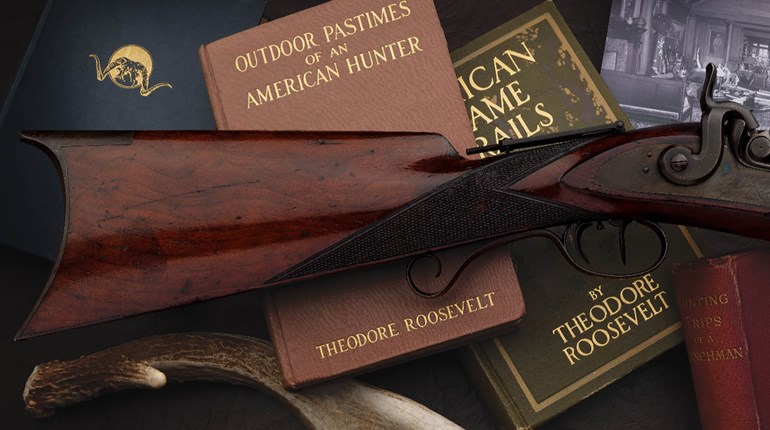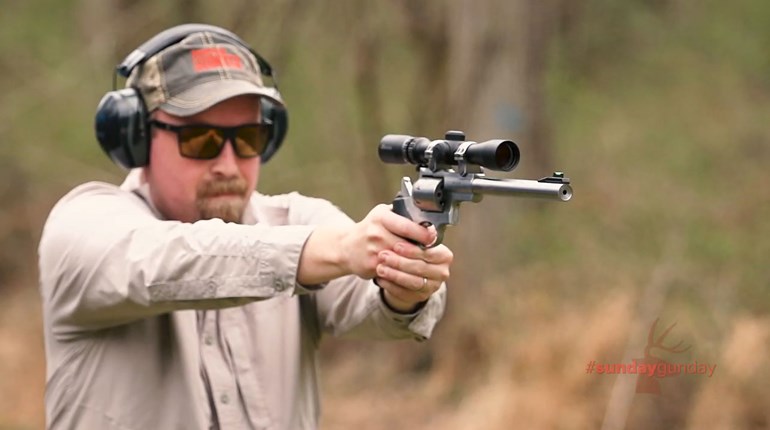
“Keep your powder dry.”
That was a common way of saying goodbye during the Mountain Man era of the mid-1800s. Those tough men lived and died with their guns and knew the importance of keeping them in working order. Black powder is hygroscopic, which is to say it is attracted to water. Muzzleloaders do not use self-contained cartridges and so the powder is dumped into the barrel as a standalone component and subject to getting wet. When water finds black powder, the powder stops working. Today’s substitutes, when wet, will also fail to ignite.
Fear not, I have a 100 percent foolproof way to make sure the muzzleloader always goes off. Stay home. Works every time. Beyond that, we risk misfires. It’s just part of hunting with a muzzleloader.
Water can creep down the bore or in through the priming flash hole. So, it’s always best to seal those after loading. Finger cots, available at most drugstores, work pretty well to seal the barrel. I prefer to use black electrician’s tape. I stretch it tight to ensure it seals. I use enough strips to cover the bore and then a wrap around the ends to keep them in place. This will not affect the shot, as the tape or cot are blown out of the way by the compressed air exiting ahead of the bullet. I have done a fair amount of range testing and have not been able to find any significant effect in accuracy in a muzzleloader with or without the muzzle taped. Never put anything inside the bore, as any obstruction can result in very bad things when you shoot the rifle. Always keep the water barrier outside the muzzle.

The best way to seal the breech with a 209 primer is to clean the primer pocket with a Q-tip and acetone or alcohol and then carefully coat the primer with fingernail polish before seating it. Make sure not to cover the hole in the bottom of the primer, or the flash hole in the nipple, just coat the sides. If you are using percussion or musket caps, coat the sides of the nipple before installing the cap. You now have a sealed system, which is a good start.
We all know somebody who says, “Leave the gun in the truck at night.” Unless you are in the desert with 2 percent humidity, the cooling and warming cycle from using the gun, and also the truck heater, can cause condensation to build up inside the bore. This can create water drops that can collect and migrate past the bullet and kill or damage the powder charge.
Also, if the gun is left outside in cold weather, ice can form in the action and cause a failure to fire. Lubricant can gel from the cold and prevent the gun from firing. Actually, this is a common problem in cold weather no matter where the gun is stored. It’s best to clean the action, trigger and all moving parts and then gently lubricate them with a lubricant designed to maintain viscosity in cold weather. Most will say on the package if they are appropriate for cold weather use. During my musk ox hunt where temps were minus 45 and windchill was minus 65 I used powdered graphite—not a horrible choice for any cold weather muzzleloader hunting. It’s available in a spray form from which the carrier evaporates and leaves only graphite.
Beyond this, I have an all but foolproof regimen that has worked without problems for me for many years. Some call it wasteful. I call it an investment in success.
At the end of hunting every single day, I fire into the ground to empty the gun. I believe I get my best accuracy by starting with a fouled bore.
My cleaning protocol includes a patch pre-impregnated with Bore Butter. I push it to the bottom of the bore, bring it up 8 inches and then back down to the bottom and pull it out. I then flip the patch and use the other side. Down to the bottom and out. It doesn’t really matter the number of strokes, except that you should do it the same way every single time. This ritual has given me the best accuracy over the years with a wide range of propellants.
 A bit of moisture control before and after your hunt goes a long way in ensuring your muzzleloading rifle will shoot when you want it to.
A bit of moisture control before and after your hunt goes a long way in ensuring your muzzleloading rifle will shoot when you want it to.
If shooting is not possible and you are using an in-line, pull the breech plug and push out the load. Be careful that no powder falls into the action. Keep the gun upside down so the powder falls free. Keep the powder, cap and bullet for practice. Do not use them again for hunting. Then I run a patch impregnated with Bore Butter through the bore.
Finally, I stand the gun up overnight and near a heat source with the action open. This dries any moisture while you sleep and brings the gun up to room temperature. Remember that condensation occurs when you bring a cold object into a heated location, but bringing a warm gun outside does not cause condensation.
In the morning, check to make sure the flash hole is clear, visually if possible. If not, fire a cap with the empty muzzle pointed at a small piece of paper. If it moves the paper, the flash hole is clear. Then carefully load the rifle with fresh components. Apply fingernail polish to the cap and tape the end of the barrel if you expect to see foul weather.
I do this every single day. I always start the hunt with a fresh charge loaded under controlled conditions indoors. The cost is really nothing if you are pulling the load and saving the components for later use. Even if you are shooting, it’s cheap compared to the overall cost of the hunt.
This approach is sure to get a lot of attention at camp as the other hunters will laugh at you and tell you how you got it all wrong. But, stay strong. A little obsessiveness goes a long way in making sure your gun goes off. Every. Single. Time.



































